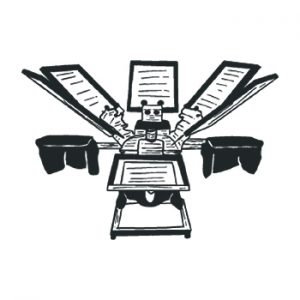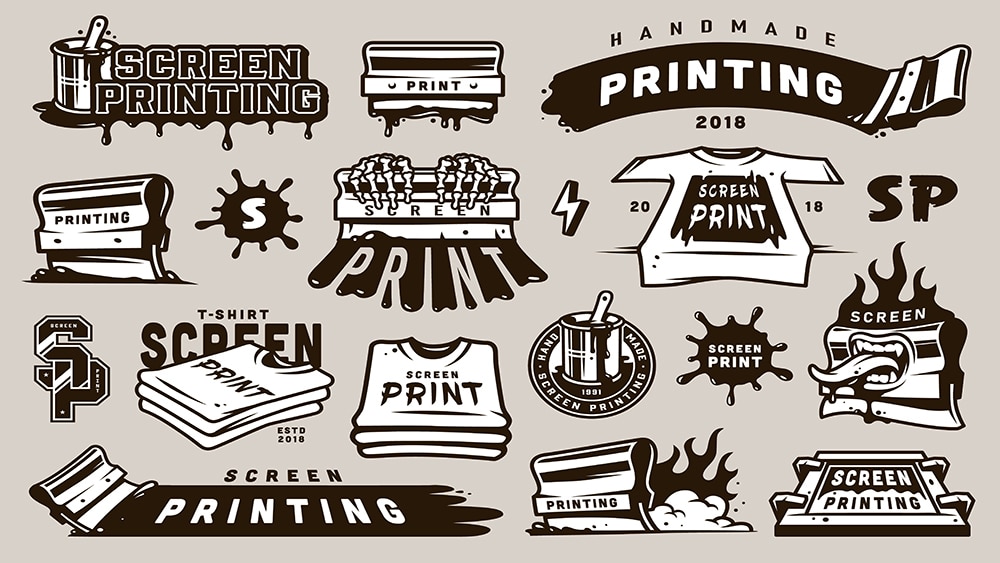When you decide to decorate clothing products such as T-Shirts, Sweatshirts, Hoodies, Toques, etc, there are several techniques you can use in order to get your desired result. Techniques like Heat Transfer, Screen Printing, Embroidery and a lot more. As suggested by the title, we’ll be focusing on two of them in this article.
HEAT TRANSFER:
Heat transfer sometimes also referred to as Heat Press Transfer has become quite popular in the last two decades. The heat transfer process involves a combination of heat and pressure to transfer graphics on clothing products such as t-shirts, polos, toques, etc. There are two types of heat transfer digital and vinyl.
In the case of vinyl heat transfer, the vinyl is explicitly cut out into the desired shape and size by a machine. After weeding, the design is placed on a piece of clothing where the graphic is supposed to go. A machine then applies heat and pressure to transfer the vinyl onto the fabric. This method is suitable for slogans, logos, custom graphics with several colours, etc.
On the flip side, in the case of digital heat transfer, the process is very similar to a regular printer. The machine is fed with the designed graphic and the image is printed on the paper using a special solvent ink. After that, the fabric is inserted into the machine, the machine then applies heat and pressure which transfers the graphic from paper to the fabric. This requires a special printer, paper and heat press to work.

Benefits of Using Heat Transfer Method:
- It allows you to print high-quality graphics on fabric.
- Easily print any design, no matter how many colours or how complex.
- It is one of the most Environment-friendly ways to customize products.
- It is cost-effective for smaller orders.
- Set up is relatively affordable.
- You can change the position of graphics however you please.
Drawbacks of Heat Transfer:
- Requires Aftercare.
- Relatively shorter lifespan.
- Not suitable for dark coloured fabric.
- Gives the fabric a bit of a stiff look and feel.
SCREEN PRINTING:
Screen Printing also is known as Silk Screening. It uses ink and trays to transfer the graphics on fabric. The first step in the process is to cut the screen to create what we can say a stencil. The next step is to place the screen on top of the fabric. The ink is poured on the screen and a squeegee is run across it, allowing the ink to seep through the stencil and onto the fabric underneath.
The process allows only one colour for each screen meaning multiple screens are required for a design that has multiple colours in it.
The process takes longer but it certainly lasts a lot longer than heat transfer printing.

Advantages of Screen Printing:
- The colours come off very vibrant, even on fabric with dark colours.
- Screen Printed designs last a lot longer compared to heat transfer.
- Proves to be cost-effective for larger orders.
- It doesn’t compromise the feel of the fabric.
- Requires little to no aftercare.
Drawbacks of Screen Printing:
- Time-consuming and messy process.
- Expensive set-up cost.
- It is not suitable for printing photos.
- The usage of chemicals makes it less eco-friendly.
- Not suitable for complex designs with many colours.
WHICH IS BETTER?
The answer to this question varies from person to person, depending on their needs. Based on the facts above, the following factors will help you decide which method to go with.
- The type and colour of fabric you wish to get decorated.
- The level of detail you’re looking to achieve.
- The number of colours in your design and its complexity.
- The amount in the budget.
- The number of items you’re looking to decorate.
- How fast you want the job to be done.
- Do you care about the environment?
Workwear Toronto is a corporate apparel and branding store located in Etobicoke, ready to do whichever you choose to go with.
For any queries about screen printing or heat transfer, feel free to speak to our branding stylists at 647-533-7223 or visit our showroom located at 24 Ronson Dr, Unit 1, Etobicoke, M9W1B4 to see some of our work in person.
To read more articles, visit our blogs page.

